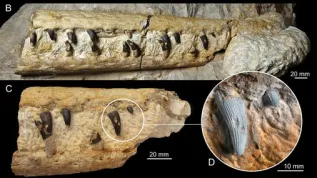
Halszkaraptor, a dinosaur named in honour of Polish palaeontologist Halszka Osmólska, was an interesting example of a predatory dinosaur leading an amphibious lifestyle - describe scientists in the pages of the weekly "Nature".
Perfectly preserved skeleton of a bipedal dinosaur from Mongolia is an example of an amphibious lifestyle - revealed the research of an international team, carried out using a synchrotron, which made it possible to accurately scan the specimen.
Halszkaraptor escuilliei represents a previously unknown species and genus among two-legged, predatory dinosaurs. The animal had a long, swanlike neck, moved on the hindlegs on land, but it swam in the water using front limbs.
The dinosaur lived in the area of present-day Mongolia about 75 million years ago. The body structure and lifestyle of this small relative of the velociraptor resembled today\'s representatives of water birds, such as swans.
The name Halszkaraptor was given to commemorate the Polish palaeontologist, Halszka Osmólska (1930-2008), who significantly contributed to the study of dinosaurs from the Gobi Desert area. The name of the Polish scientist has already been used to name three other species of dinosaurs.
More information here. (PAP)
PAP - Science in Poland
krx/ zan/ kap/
tr. RL













